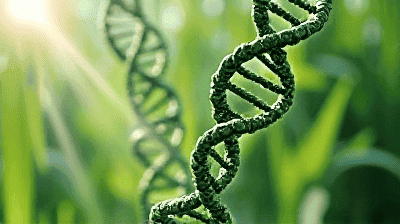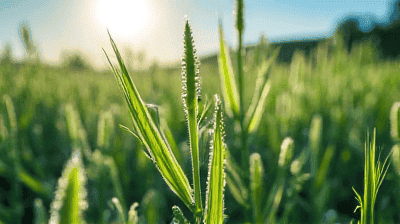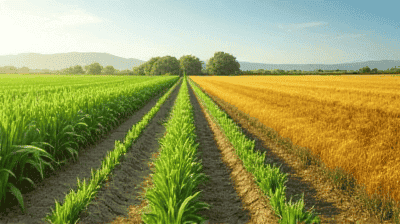
In the face of rapidly changing climate conditions and increasing global food demands, agriculture stands at a critical crossroads. Traditional farming methods are being challenged by environmental stressors, particularly drought, which significantly impacts crop yields. One of the most revolutionary tools in modern agriculture is gene editing, specifically the CRISPR technology.
Understanding CRISPR Technology
What is CRISPR?
CRISPR, which stands for Clustered Regularly Interspaced Short Palindromic Repeats, is a revolutionary gene editing technology that allows for precise modifications to the DNA of living organisms. The system was first discovered in bacteria, where it serves as a part of their immune defense against viruses. Researchers have adapted this natural mechanism to develop a powerful tool for editing genes in various organisms, including plants.
How CRISPR Works
CRISPR technology works through a simple yet effective mechanism involving two key components:
Guide RNA: This RNA molecule is designed to match a specific DNA sequence in the target gene. It helps direct the CRISPR system to the correct location in the genome.
Cas9 Enzyme: This is the protein that acts as molecular scissors, cutting the DNA at the location specified by the guide RNA. Once the DNA is cut, the cell's natural repair mechanisms kick in. Researchers can harness these repair processes to introduce desired changes, such as inserting, deleting, or modifying specific genes.
Benefits of Using CRISPR in Agriculture
The advantages of using CRISPR in agriculture are numerous:
Precision: CRISPR allows for targeted edits in the genome, minimizing off-target effects compared to older gene editing techniques.
Speed: Traditional plant breeding methods can take many years to yield results, but CRISPR can produce desired traits in a single generation.
Cost-effectiveness: CRISPR technology is cost-efficient, making it accessible for a wide range of research and commercial applications.
The Challenge of Drought in Agriculture

The Growing Threat of Drought
Drought has become an increasingly critical issue affecting global agriculture. According to the World Bank, droughts account for significant economic losses and crop failures worldwide, particularly in regions where agriculture is heavily reliant on rainfall. This has prompted researchers and agronomists to seek innovative solutions to mitigate the effects of drought on crop production.
Impact of Drought on Crop Yields
Drought stress adversely affects plant growth and development, leading to reduced yields and compromised quality. The effects include:
Reduced Germination Rates: Seeds may fail to germinate if soil moisture levels are inadequate.
Stunted Growth: Drought stress limits the plant's ability to uptake nutrients and water, resulting in poorer growth.
Lower Pollination Success: Stress conditions can lead to flower drop and reduced pollination, further diminishing yields.
Increased Vulnerability to Disease: Drought-stressed plants are often more susceptible to diseases and pests, compounding the issues faced by farmers.
Given these challenges, developing drought-resistant crops using CRISPR technology presents a viable path forward for achieving food security.
CRISPR Applications in Developing Drought-Resilient Crops
Identifying Target Genes for Drought Resistance
The first step in utilizing CRISPR for developing drought-resistant crops involves identifying the specific genes associated with drought tolerance. Researchers have successfully identified several key genes that play a role in plants' ability to cope with water stress.
Stress-Responsive Genes
These genes encode proteins that help plants respond to environmental stressors. Modifying these genes can enhance a plant's resilience to drought.
Transporter Genes
Genes that regulate the transport of water and nutrients within the plant can also be targets for CRISPR. Improving the efficiency of these transport systems may aid in drought resistance.
Case Studies of CRISPR in Action
Several research projects and field trials illustrate the potential of CRISPR in developing drought-resilient crops.
Case Study 1: Drought Resilient Rice
Scientists at the Chinese Academy of Sciences have utilized CRISPR to modify specific genes in rice, leading to enhanced drought tolerance. By targeting a gene involved in the plant's stress response, researchers were able to produce rice varieties that demonstrated improved performance under drought conditions, yielding higher crops while using less water.
Case Study 2: Drought Tolerant Maize
Researchers at universities in the United States have focused on maize as a critical staple crop. Using CRISPR, they have identified and modified genes that regulate water use efficiency. Early trials have shown that these genetically edited maize plants can maintain higher yields even in regions experiencing prolonged droughts.
Case Study 3: Improved Soybean Resistance
Soybean crops are vital for global food supplies and animal feed. Researchers have successfully used CRISPR to edit genes associated with stress tolerance in soybean plants. The resulting varieties have shown increased drought resilience, enhancing yields and ensuring consistent food supply.
Field Trials and Adoption
Field trials play an essential role in evaluating the performance of CRISPR-edited crops under real-world conditions. These trials help researchers quantify the effectiveness of drought resistance in various environments and assess other traits such as disease resistance and overall yield.
Farmers in regions prone to drought are increasingly enthusiastic about adopting CRISPR-edited crops, driven by the promise of enhanced resilience and productivity.
Regulatory Landscape and Challenges

Navigating Regulatory Approval
The introduction of gene-edited crops into the market involves navigating complex regulatory frameworks. Different countries have varying policies regarding genetically modified organisms (GMOs) and gene editing technologies. In some regions, CRISPR-edited crops may face stringent regulations, while others may have more lenient approaches.
United States
In the United States, the Department of Agriculture has indicated a more favorable regulatory framework for gene-edited crops, classifying them differently from traditional GMOs. This could streamline the approval process for CRISPR-edited crops.
European Union
In contrast, the European Union has taken a more cautious approach, subjecting CRISPR-edited crops to the same rigorous regulations as traditional GMOs. This has resulted in significant delays and barriers to approval.
Public Perception and Ethical Considerations
Public perception of gene editing in agriculture varies widely. While some consumers embrace the potential benefits, others express concerns about food safety and environmental impacts. Building public trust in CRISPR technology requires transparency, education, and public engagement.
Ethical Implications
The use of CRISPR raises ethical questions regarding the manipulation of genetic material. Debates surrounding naturalness, biodiversity preservation, and the potential for unintended consequences underscore the need for responsible research and application.
Future Prospects for CRISPR in Agriculture
Expanding the Scope of Gene Editing
The success of CRISPR in enhancing drought resistance opens the door to further applications in crop improvement. Future research may explore the potential for developing crops with multi-stress tolerance, enabling them to withstand not only drought but also heat, salinity, and pest pressures.
Integrating CRISPR with Other Technologies
The future of agriculture may well involve a synergistic approach, integrating CRISPR with other cutting-edge technologies such as synthetic biology, AI, and machine learning. These innovations can work together to optimize crop performance and resilience under varying environmental conditions.
Enhancing Global Food Security
As climate change continues to challenge global agriculture, CRISPR technology can play a vital role in ensuring food security. By developing drought-resilient crops, researchers can help farmers adapt to changing environmental conditions and maintain productivity, addressing the growing needs of a rising population.
Conclusion

Gene editing using CRISPR technology is revolutionizing agriculture, particularly in developing drought-resilient and high-yield crops. The precision, speed, and cost-effectiveness of CRISPR make it a powerful tool in the face of environmental challenges.
As research progresses and successful case studies emerge, CRISPR offers a path forward for sustainable agriculture, enhancing farmers' ability to cope with the realities of climate change. However, it is essential to navigate the regulatory, ethical, and public perception challenges that accompany this technology.
By embracing the potential of CRISPR and fostering responsible practices, the agricultural sector can create resilient systems capable of meeting the demands of future generations while ensuring environmental sustainability.
Related
-

-
Artificial intelligence

-

-

-

-

